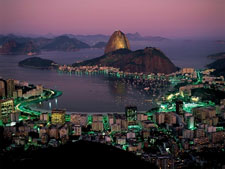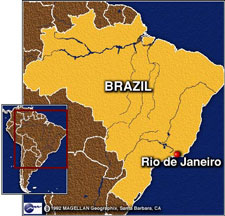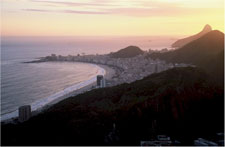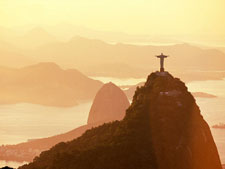|
Rio
de Janeiro
|
|
|
|
|
|
|
|
|
|
|
|
|
|
|
|
|
Rio de Janeiro
was discovered on January (Janeiro in Portuguese) 1, 1502 by
Portuguese navigators who mistook the entrance of Guanabara
Bay for the mouth of a river (rio in Portuguese). Sixty years
later because French traders in search of pau-brasil (Brazilwood)
were routinely "visiting" the area, the Portuguese
crown established the city of Sao Sebastiao do Rio de Janeiro
(Nowadays known only as Rio de Janeiro).
|
|
|
|
|
 |
|
|
|
|
|
After 2 years of bloody conflict the French were expelled
and settlers began to cultivate the surrounding fertile lands.
In the beginning of the 18th century the city's
importance and population increased immensely as it became the main shipping
port for gold and diamonds that came from the state of Minas Gerais. In 1763
the colonial capital of Brazil was transfered from Salvador, Bahia to Rio de
Janeiro.
|
|
|
 |
|
|
|
 |
|
|
|
|
|
|
|
|
|
|
|
|
|
In 1808, as Napoleon's armies
began the invasion of Portugal, the decision was made to
transfer the monarch and his court to Rio de Janeiro, where
he would remain until 1821. During this time Brasil was elevated
in status from a colony to United Kingdom of Brazill.
|
|
|
|
After the independence of
Brazil, Rio de Janeiro became the capital of the new empire.
The city prospered economically, and by 1891 it had a population
of over 500,000 inhabitants ranking it one of the largest
cities in the world. As the city grew in prominence mountains
were removed, bay water reclaimed, and skyscrapers constructed.
|
|
|
 |
 |
 |
 |
 |
 |
 |
 |
 |
 |
 |
 |
 |
 |
Top
More
Pictures
|